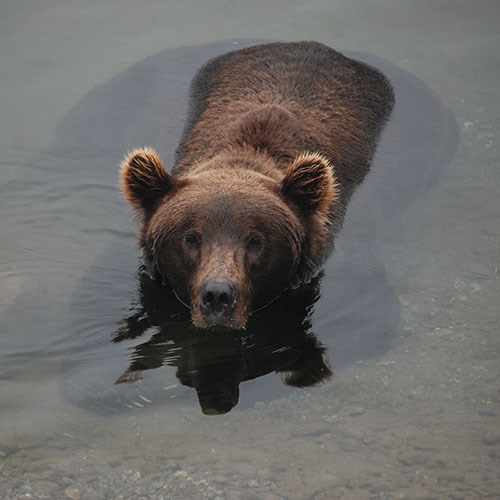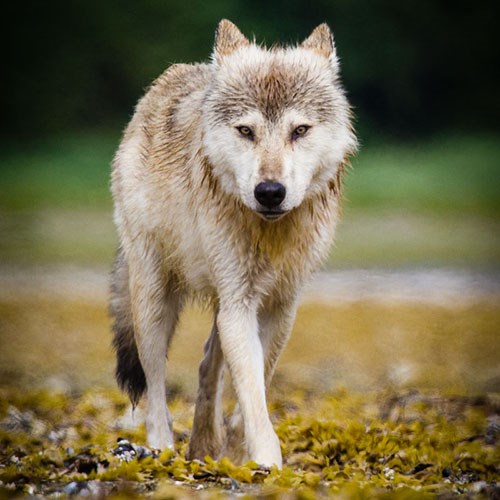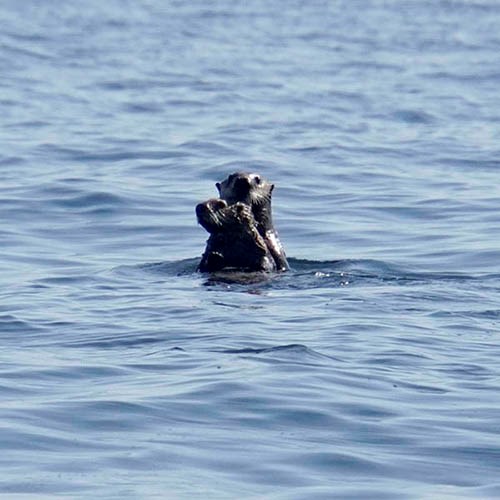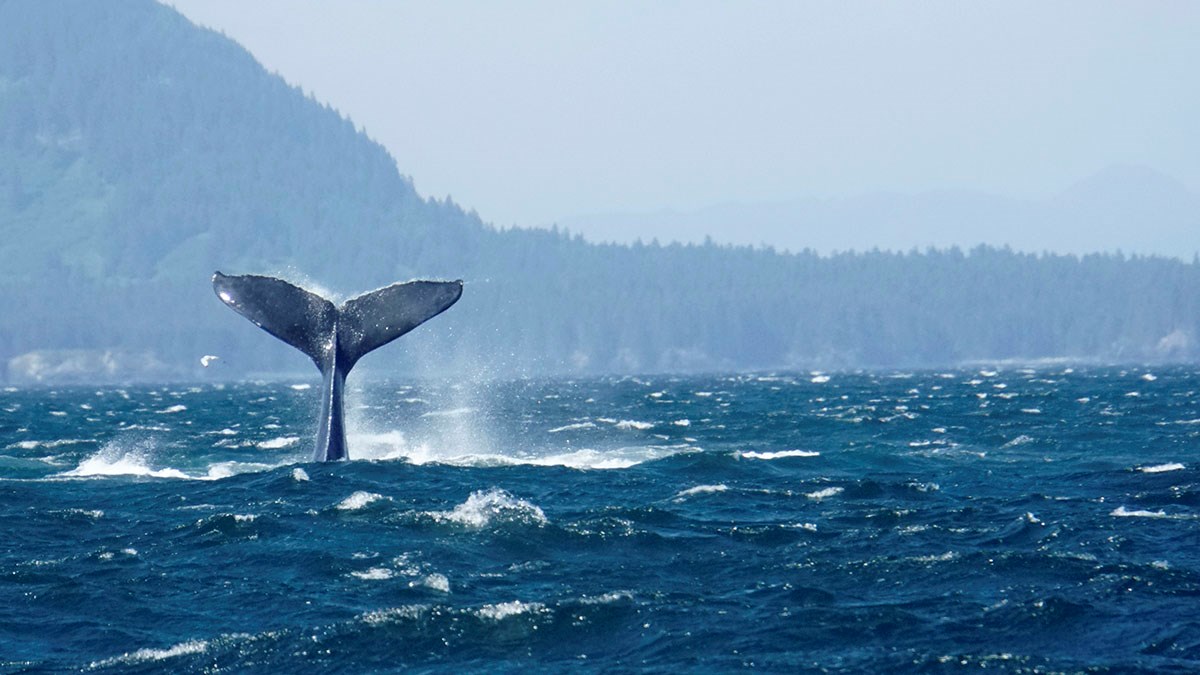|
Scientists in Katmai have documented 42 species of mammals from the coast to the tundra. Brown bears and moose live throughout the coastal and lake regions of Katmai National Park and Preserve. Other mammals include caribou, red fox, wolf, lynx, wolverine, river otter, mink, marten, weasel, porcupine, snowshoe hare, red squirrel, and beaver. Along the coast are sea lions, sea otters, harbor seals, porpoise. Beluga whales, orcas, and gray whales sometimes use the Shelikof Strait just beyond Katmai's boundaries. One of the largest land mammals in North America to some of the smallest, Katmai has many species that thrive here. 
Brown Bear (Ursus arctos)
Find out more on Katmai’s bears in the brown bear frequently asked questions. 
Gray Wolf (Canis lupus)

Sea Otter (Enhydra lutris)
The Southwest Alaska Network monitors sea otters along Katmai’s and Kenai Fjords’ coast.

Humpback Whale (Megaptera novaeangliae)
Explore Kenai Fjords National Park and Glacier Bay National Park to learn more about humpback whales.
|
Last updated: June 1, 2021
